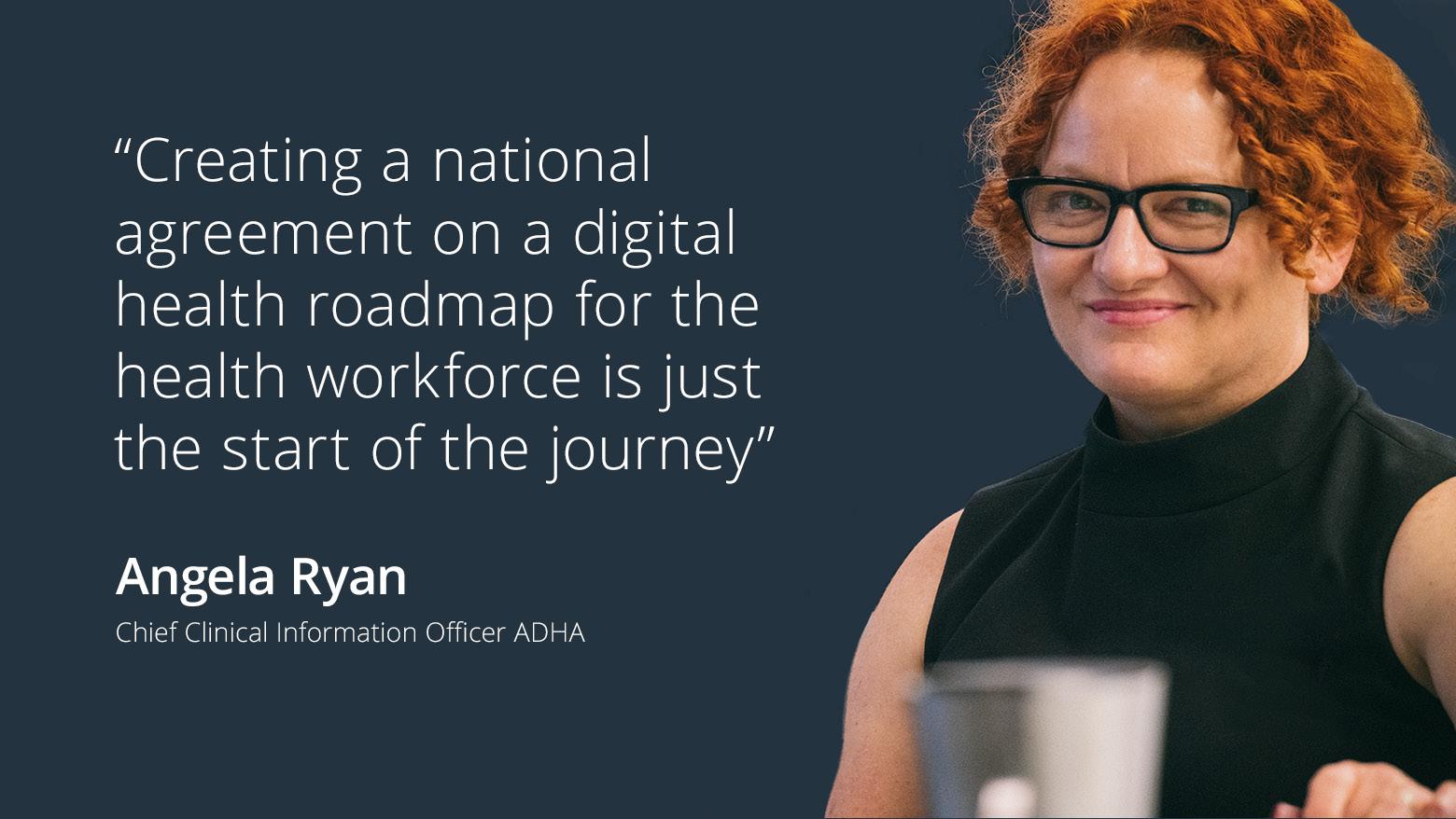
4 minute read
The National Digital Health Workforce and Education Roadmap
ANGELA RYAN RN MACN FAIDH, Chief Clinical Information Officer Australian Digital Health Agency
LEE WOODS RN PhD, Senior Project Manager Australian Digital Health Agency
SHIVA SHARIF PhD, Digital Health Officer Australian Digital Health Agency
Improving the digital capabilities of Australia’s health workforce
The benefits of digital health technologies are significant and compelling. Used effectively, digital health technologies can save lives, as well as improve the health and wellbeing of all Australians. Further, these technologies can support a sustainable health system that delivers safe, high quality, and effective health services. These technologies are already profoundly changing the way healthcare is delivered, impacting traditional approaches to health occupations, tasks and functions. In addition, a confident and capable health workforce is required to realise the benefits of digital health technologies.
The National Digital Health Workforce & Education Roadmap (the roadmap) is a strategy for the health workforce and preparedness in digital health. The roadmap provides a basis for understanding the digital capability requirements of all those involved in the healthcare system including the health workforce, volunteers and health consumers. The coverage and relevance extend beyond the over 760,000 registered healthcare providers as the entire sector’s workforce will play a role in delivering the benefits of the evolving digital health system. The roadmap also acknowledges how the application of digital technologies in health are impacting the workforce and associated education requirements and anticipates how these technologies are likely to impact the workforce and education requirements in the medium term,including emerging technologies. It is intended to offer a common foundation for the work that will be performed by a broad range of health system participants to address the challenges and opportunities presented by digital health in all its guises.
It indicates the fact that the education and training provided to the current and future health workforce must be re-shaped in order to meet the existing and emerging digital requirements, and that a partnership with the education sector is essential. This roadmap is designed to be broad in its application, covering the whole of the health workforce, including all clinical and non-clinical roles.
On a very practical and topical level delivering health care as we face the challenges of the COVID-19 pandemic has meant new technology, skills and processes to enable electronic prescribing and telehealth.

The roadmap was developed with wide stakeholder engagement and collaboration across the health and education sector in Australia, including a governance group to ensure appropriate oversight. Key activities included a literature review, stakeholder interviews, consumer interviews, workshops, surveys and a national Summit. The roadmap was endorsed by the Commonwealth, and all states and territories, prior to its launch by the Minister for Health, the Hon Greg Hunt MP on 14 September 2020.
The roadmap consists of three main components including:
1. Seven Principles, defined to conceptualise the changes required, which serve as a foundation for how the roadmap will evolve.
2. A three-horizon framework designed to explore the workforce and education changes required for adoption of digital health technologies.
These three horizons will be progressed in parallel, reflecting the different stages of digital health maturity across the health system.
The educational priorities are categorised per horizon. Digital literacy will be the key priority in Horizon 1 to enable secure and ethical management of individuals’ data and bring everyone up to a baseline level of capability.
In Horizon 2, education pathways that support new roles in health will emerge. Governance, Risk and Ethical training will be the key priority to enable safe and secure ways of working.
Governance, Risk and Ethical training will remain important to support new models of care in Horizon 3, whilst training on new job requirements will be also needed.
3. A digital profile framework to articulate the expectations of the health workforce as a result of the adoption of digital health technologies.
The members of the health workforce come from a variety of roles. These roles and their corresponding responsibilities are classified as eight ‘digital profiles’ in the roadmap.
In order to support jurisdictions, healthcare organisations, and groups who are identified in the roadmap to implement its recommendations, a Capability Action Plan (CAP) will be developed. The CAP will contemplate, in detail, the roles and responsibilities, timeframes and targets for different sets of stakeholders across Australia. The CAP is the critical next step to ensure implementation of the roadmap and realisation of the benefits that will flow to Australia’s health workforce.
The Agency has also published a summary of the roadmap to provide a snapshot of its key elements.
“To fully harness digital health to solve Australia’s greatest health and healthcare challenges, the digital workforce needs to continue to grow. The roadmap provides a blueprint for how these skills can be developed in the current workforce and highlights the skills we need to develop in the workforce of the future,” said Dr David Hansen, CEO of CSIRO’s Australian e-Health Research Centre.
Associate Professor Clair Sullivan from the University of Queensland and Brisbane’s Metro North Hospital and Health Service said “We need to shape and mould the future of healthcare in Australia. Fragmentation is not going to help us. We need to come together and learn from each other and this is a great first step.”
Professor John Dewar AO. Deputy Chair, Universities Australia and Chair, Universities Australia’s Health Professions Education Standing Group said “Universities play a critical role in educating Australia’s future health professionals, so they gain the knowledge and skills required to meet our communities’ needs. This includes delivering new models of care in which digital technologies are playing an increasing role.”
Please contact Workforce@digitalhealth.gov.au if you would like more information.










